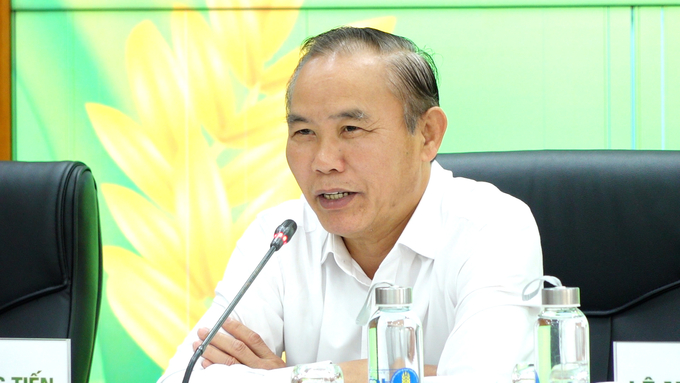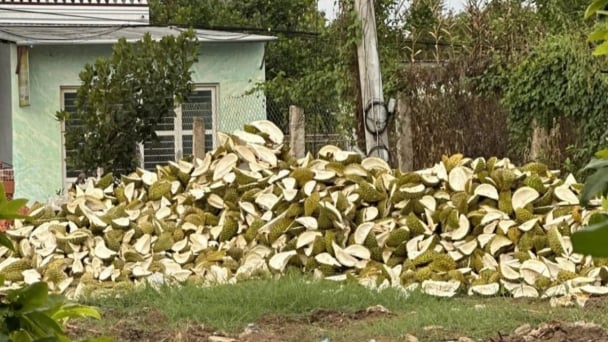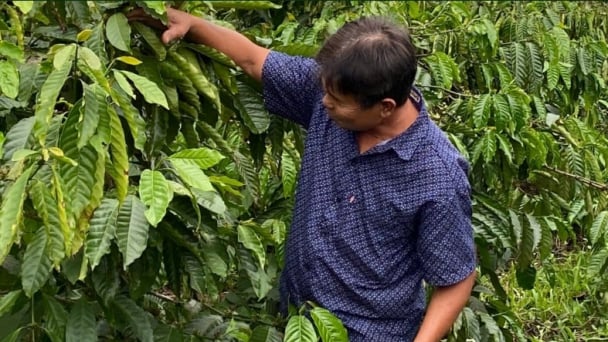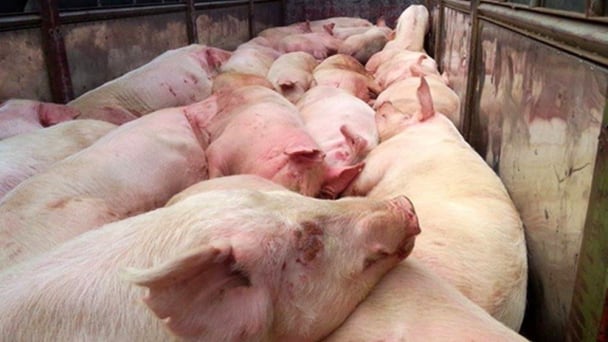June 21, 2025 | 07:35 GMT +7
June 21, 2025 | 07:35 GMT +7
Hotline: 0913.378.918
June 21, 2025 | 07:35 GMT +7
Hotline: 0913.378.918

Deputy Minister Phung Duc Tien at the conference summarizing the work of the first six months and deploying tasks for the last six months of 2024. Photo: Thanh Thuy.
In light of the growing threat of livestock and poultry diseases, particularly ASF, MARD has recommended that the Prime Minister issue Directive No. 58 on June 16, 2024. This directive emphasizes the need to implement preventive and control measures for livestock and poultry diseases in a synchronized, decisive, and effective manner.
MARD has issued more stringent instructions to local authorities to effectively prevent, identify, and manage instances of unlawful transportation and trading of breeding animals and breeding animal products with uncertain origins. As a result of these initiatives, the livestock and poultry agricultural industry has experienced a generally stable growth.
As of July 1, 2024, MARD reports that the country is currently free from avian influenza and PRRS outbreaks. However, there are 296 outbreaks of African Swine Fever (ASF) in 20 provinces. Additionally, there are three outbreaks of foot-and-mouth disease in Yên Bái and Gia Lai provinces, and five outbreaks of lumpy skin disease in three provinces that have not yet reached the 21-day mark. A total of 47,558 cattle and poultry were lost and euthanized in the initial half of the year, with 12,424 being poultry and 35,134 being livestock.
Pham Kim Dang, Deputy Director of the Department of Livestock Production, stated that the livestock business has achieved its current growth rate by rigorously adhering to development schemes. The cattle sector is undergoing a significant transformation in terms of scale and methodology. It is shifting from small-scale farming to concentrated, chain-linked farming. Additionally, farming areas are being relocated from locations with limited land availability to larger areas in order to maintain biosafety.

ASF has been detected in 44 provinces and cities, leading to the euthanization of more than 39,000 pigs, which is three times more than the previous number. Photo: Bao Cong Ly.
Through the collaboration of the veterinary industry, the disease has been well managed, and the act of smuggling has been successfully thwarted. This has had a beneficial effect on domestic production, allowing for better control of imports and a rise in exports.
Mr. Dang states that the present price of live pigs in Vietnam is higher compared to the prices in the Philippines, Indonesia, Laos, Thailand, and Cambodia. However, the prices in Vietnam are similar to those in China. The presence of such exchange rates may create a potential threat of illicit cross-border movement of pigs into Vietnam, thereby impacting the country's domestic production. Hence, the livestock industry in Vietnam must prioritize the prevention of cross-border smuggling as a crucial undertaking in the coming years.
In addition, the livestock sector will prioritize the promotion and guidance of communities to synchronize livestock development with crop cultivation. This will ensure that the absorption of livestock waste matches to the cultivated area and efforts to enhance the soil.
Director of the Department of Animal Health, Nguyen Van Long, stated that disease control across the country is generally efficient in the field of veterinary practice. Nevertheless, ASF has been detected in 44 provinces and cities, leading to the euthanization of more than 39,000 pigs, which is three times more than the previous number. This surge can be attributed to the incompetence and laxity exhibited by the authorities, specialized agencies, and farmers at all levels. During outbreaks, there is frequently a lack of adherence to norms in terms of legally declaring and managing them, resulting in the sale of pigs from houses that are infected and even the slaughter of pigs who are diseased.

Mr. Long states that a contributing factor to the development of the disease is the lack of sufficient information and communication regarding the ASF vaccine at the local levels of the commune. Photo: Thanh Thuy.
ASF situation is most critical in Bac Kan province, with a total of over 12,000 swine affected. Following Bac Kan, Lang Son, Quang Ninh, and Hoa Binh provinces are also experiencing significant ASF outbreaks. Conversely, Cao Bang province, situated between Lang Son and Bac Kan, has experienced only a limited number of outbreaks as a result of successful vaccination campaigns.
Mr. Long states that a contributing factor to the development of the disease is the lack of sufficient information and communication regarding the ASF vaccine at the local levels of the commune and district. Thus far, a total of around 6 million vaccine doses have been manufactured and distributed, of which 3.9 million doses have been administered for domestic immunization purposes. MARD has issued several directives about vaccination. However, the implementation of these directives at the commune and district levels is severely lacking due to the fragmentation of the lower-level veterinary system. This fragmentation is a fundamental issue that is contributing to the outbreaks of African Swine Fever (ASF).
As a result of the Prime Minister's Directive No. 58/CD-TTg and the MARD conference on animal disease prevention and control, there has been a noticeable increase in local involvement in disease preventive initiatives.
Mr. Long confirmed that although 39,000 pigs were destroyed as a result of the ASF outbreak, out of a total statewide herd of 26 million, the illness is currently well managed but still carries the potential for further escalation.
In addition, he observed that the occurrence of rabies, which has led to 44 fatalities across 23 provinces and cities, can be attributed in part to the protracted procedure followed by local authorities in arranging the purchase of vaccines. Consequently, the vaccination rates have been extremely sluggish, currently standing at approximately 55%, which falls short of the mandated benchmarks.
Deputy Minister Phung Duc Tien emphasized that ASF vaccine is of utmost importance to both the government and the MARD. Hence, a precise strategy is required to incorporate the ASF vaccination into practical application. Presently, there are a total of 6 million doses available, primarily designated for administration to pigs intended for fattening purposes. The Deputy Minister emphasized the need of the Department of Animal Health prioritizing testing and experimentation in order to expand the scope of immunization to include sows.
Translated by Dieu Linh

(VAN) The waste of resources from agricultural by-products and the situation of counterfeit and poor quality goods in production causing losses of thousands of billions were pointed out by the National Assembly deputy.

(VAN) After 5 years of implementation, the CAI initiative has helped coffee growers change their farming practices, moving toward responsible agriculture that meets global export standards.

(VAN) The primary prerequisite for the comprehensive and robust integration of Vietnam's livestock sector into the global value chain is the establishment of a disease control system.

(VAN) The results of national programs are essential for establishing a contemporary livestock sector that is well-equipped to meet the demands of both domestic and international markets, with robust biosafety standards.

(VAN) The UNESCO Global Geopark revalidation of Non nuoc Cao Bang and the transition to a two-tier administrative model are presently undergoing a pivotal moment in Cao Bang, the northernmost province of Vietnam.
/2025/06/13/5330-2-004539_953.jpg)
(VAN) Changing policy mindset and removing investment barriers are urgent requirements to open up new development space for enterprises in the agricultural sector.

(VAN) The areas include the restoration of five million hectares of marine ecosystems.